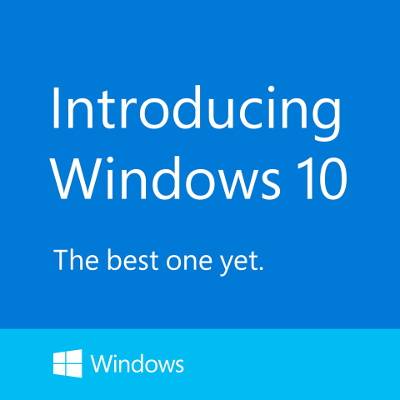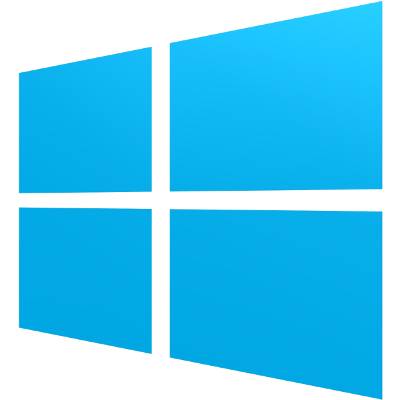Have any question?
Call (409) 861-4450
Call (409) 861-4450
Multitasking is a common thing for today’s workers, and so is having multiple tabs open in your web browser. You might even have multiple different apps running simultaneously, which can make you feel like you have to constantly close one window to open another. Well, no more. You can use Smart Windows (also known as Snap Windows) to place two or more side-by-side and enhance your productivity.
The end of Windows 10 support is closer than you think. On October 14, 2025, Microsoft will officially stop providing free security updates, non-security updates, and assisted support for Windows 10. For businesses, this isn't just a minor inconvenience—it's a critical security and operational risk that demands immediate attention.
The sun is setting on an era. On October 14, 2025, Windows 10 will officially reach its end of support. For millions of users worldwide, this marks a significant turning point, prompting questions, concerns, and perhaps a touch of nostalgia for an operating system that has served faithfully for a decade.
So, what exactly does end of support mean, and what should you be doing now to prepare? Let's dive in.
While your attention is likely more dedicated to how you use your computer while it’s on, it is just as important to consider the different ways that you can turn your computer off, in a manner of speaking. The varied options present in the Start menu will each have their own effect, so it is important to be aware of what these differences are. Let’s review what each option does so that you’ll be able to use them more appropriately.
Nowadays, a business’ network security needs to be amongst its top priorities if it is to have any chance of operating without undue risk of data breaches and other incidents. Admittedly, managing this sounds like a Herculean task, but a few relatively simple implementations can help give your security a considerable advantage as you lock down your business’ future. Here, we’ve reviewed four such areas you need to focus on.
Microsoft is the world’s most profitable software company, and if your business is like any of the millions of businesses that rely on Microsoft’s servers, you know they are both useful and secure. Occasionally, however, Microsoft will retire older software titles as they need constant care and support. On July 9, 2019, Microsoft will officially retire their SQL Server 2008 and SQL Server 2008 R2 operating systems. If your organization still uses this software there is no time like the present to get you systems updated, as losing support will be a major problem.
August saw yet another Patch Tuesday designed to resolve security issues in Microsoft products. Out of the 48 vulnerabilities resolved, 15 affected Windows, while 25 were rated as critical, 21 as important, and 27 that allowed for remote code execution. This might sound a little overwhelming, so we’ll try to simplify it a bit--a lot of flaws were fixed, and the majority of them can be considered dangerous for your organization.
It’s no secret that finding a particular program or file on your computer can be a pain, especially when you don’t have the time to hunt it down by clicking through folders. However, there is a much easier way to locate your desired data. All you need to do is use the search option found in the Start menu, which is the subject of this week’s tip.
 By design, Microsoft’s operating systems aren’t built to last forever. Due to the fact that technology is always changing, new operating systems with better security and improved capabilities are routinely needed. Microsoft gets users to transition from an older OS to a newer one by ending support for the older one. This begs the question, how long until Microsoft pulls the plug on your OS?
By design, Microsoft’s operating systems aren’t built to last forever. Due to the fact that technology is always changing, new operating systems with better security and improved capabilities are routinely needed. Microsoft gets users to transition from an older OS to a newer one by ending support for the older one. This begs the question, how long until Microsoft pulls the plug on your OS?
 We’ve all seen the various accent marks, or “diacritical marks,” used in languages all over the world. For example, the umlaut (as seen in the word “über” ) is used in some German and Hungarian words to signal how to pronounce specific vowels. While these have mostly disappeared from the English language, we see them from time to time when going about our business on the web, and every time, the same question plays in our heads: “How the heck do you type that?”
We’ve all seen the various accent marks, or “diacritical marks,” used in languages all over the world. For example, the umlaut (as seen in the word “über” ) is used in some German and Hungarian words to signal how to pronounce specific vowels. While these have mostly disappeared from the English language, we see them from time to time when going about our business on the web, and every time, the same question plays in our heads: “How the heck do you type that?”
 One of the most basic functions that the average Windows user should understand is how to get rid of applications and programs that are unnecessary or potentially threatening. Previous versions of Windows made users jump through hoops to get rid of their unwanted apps and programs, but Windows 10 makes it much easier to do so. In fact, there are three easy ways to eliminate your unnecessary apps and programs.
One of the most basic functions that the average Windows user should understand is how to get rid of applications and programs that are unnecessary or potentially threatening. Previous versions of Windows made users jump through hoops to get rid of their unwanted apps and programs, but Windows 10 makes it much easier to do so. In fact, there are three easy ways to eliminate your unnecessary apps and programs.
 It’s been quite some time since Microsoft cut the cord on Windows XP support, rendering it insecure and incredibly risky to run in a professional setting. This was quite a blow to both PC users and business professionals, but it’s about to get even worse for the antiquated operating system. Now, even Google is cutting support for their web browser, Google Chrome, for older operating systems from both Microsoft and Apple.
It’s been quite some time since Microsoft cut the cord on Windows XP support, rendering it insecure and incredibly risky to run in a professional setting. This was quite a blow to both PC users and business professionals, but it’s about to get even worse for the antiquated operating system. Now, even Google is cutting support for their web browser, Google Chrome, for older operating systems from both Microsoft and Apple.
 July 14th is an important date in the business technology world. Why? Because it’s a major landmark for users of Windows Server 2003. In just a few short months, Microsoft will no longer support this decade-old server operating system. Therefore, you must take steps to upgrade away from this server OS before it’s too late.
July 14th is an important date in the business technology world. Why? Because it’s a major landmark for users of Windows Server 2003. In just a few short months, Microsoft will no longer support this decade-old server operating system. Therefore, you must take steps to upgrade away from this server OS before it’s too late.
 We all have forgetful moments when we misplace things like our car keys and wallet. Sometimes, we can even forget basic things like where we saved an important computer file. Thankfully, Windows understands these moments of forgetfulness and they’ve made it relatively easy for users to find what they’re searching for.
We all have forgetful moments when we misplace things like our car keys and wallet. Sometimes, we can even forget basic things like where we saved an important computer file. Thankfully, Windows understands these moments of forgetfulness and they’ve made it relatively easy for users to find what they’re searching for.
 If you were asked to recall the last time you restarted your PC or smartphone, could you? Too many people don’t take the few minutes required to promote quality efficiency and productivity with their machines. In fact, rebooting can be very much like a full night’s sleep for a computer, and without it, its performance might not meet your business’s expectations.
If you were asked to recall the last time you restarted your PC or smartphone, could you? Too many people don’t take the few minutes required to promote quality efficiency and productivity with their machines. In fact, rebooting can be very much like a full night’s sleep for a computer, and without it, its performance might not meet your business’s expectations.
 Windows 10, the next big Microsoft’s Windows operating system, has a lot to live up to, and enterprises have had the chance to experiment with the technical preview for the past month. While the operating system will still be in development for the better part of next year, some professionals are forming opinions of what to expect from it. From the technical preview, what do businesses think of Windows 10 so far?
Windows 10, the next big Microsoft’s Windows operating system, has a lot to live up to, and enterprises have had the chance to experiment with the technical preview for the past month. While the operating system will still be in development for the better part of next year, some professionals are forming opinions of what to expect from it. From the technical preview, what do businesses think of Windows 10 so far?
 The news is out; what was previously thought to be Windows 9, codenamed “Threshold,” has been revealed to be Windows 10. While leaks have already shown us quite a bit of what the latest installment of Windows can do, the official reveal goes into more detail about the nature of Windows 10 for enterprises and even common users. First, let’s go over what we already know about the enigmatic new operating system, then we’ll get into the juicy new details.
The news is out; what was previously thought to be Windows 9, codenamed “Threshold,” has been revealed to be Windows 10. While leaks have already shown us quite a bit of what the latest installment of Windows can do, the official reveal goes into more detail about the nature of Windows 10 for enterprises and even common users. First, let’s go over what we already know about the enigmatic new operating system, then we’ll get into the juicy new details.
 Windows XP is a product that has consistently performed well for Microsoft and it continues to see growth, even though it's not supposed to. With its support ending this past April, Windows XP was supposed to never be heard from again. Instead, XP is refusing to go quietly into the night by posting positive usage numbers for June 2014.
Windows XP is a product that has consistently performed well for Microsoft and it continues to see growth, even though it's not supposed to. With its support ending this past April, Windows XP was supposed to never be heard from again. Instead, XP is refusing to go quietly into the night by posting positive usage numbers for June 2014.
Get the Knowledge You Need to Make IT Decisions
Technology is constantly evolving, and keeping up can feel overwhelming. Whether you want to understand cybersecurity threats, explore automation, or learn how regulations like PCI DSS impact your business, we’ve made it easy to access clear, straightforward insights on key IT topics.
Learn more about what NetWorthy Systems can do for your business.
NetWorthy Systems
701 W. Division Ave Suite 100
Orange, Texas 77630